As the dawn of a new presidency glows in the United States, many Americans wonder about our relationship with our neighbors in the East. Despite the ongoing rhetoric and constant tit-for-tat , we’ve managed to not destroy each other in mutual nuclear destruction. Most people agree that is a good thing, something we’d like to keep going.
While it seems implausible that another Cold War could be upon us, we would be foolish to ignore the lessons of the past. To help us never forget, we’ve preserved our memories in images like these…
February 1945 | When We Were Allies
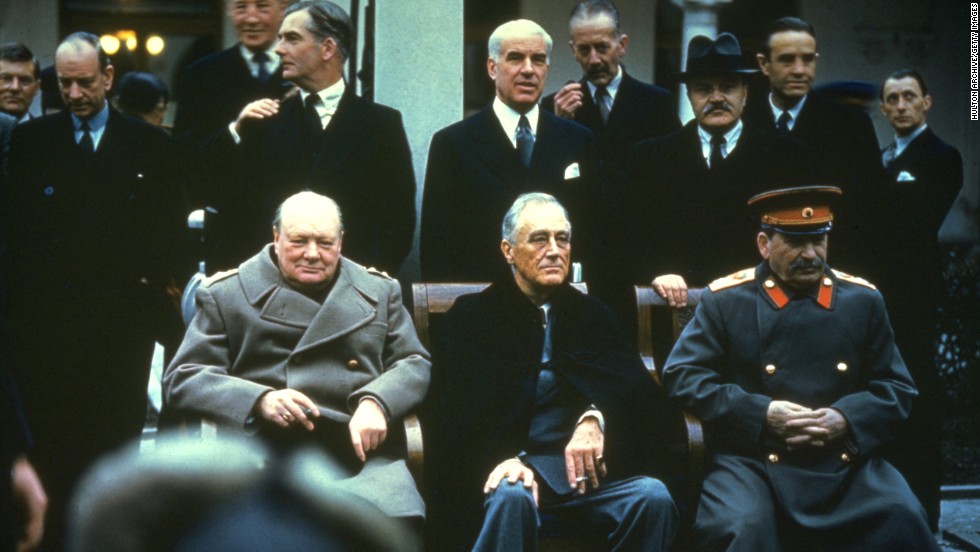
(source: edition.cnn.com)
If you’re talking about WWII, this picture is near the end of the war. If you’re talking about the cold war, it’s only just begun. Winston Churchill, Franklin Delano Roosevelt, and Josef Stalin agreed to run Germany until they could get back on their feet.
March 1st, 1945 | Operation Castle Bravo
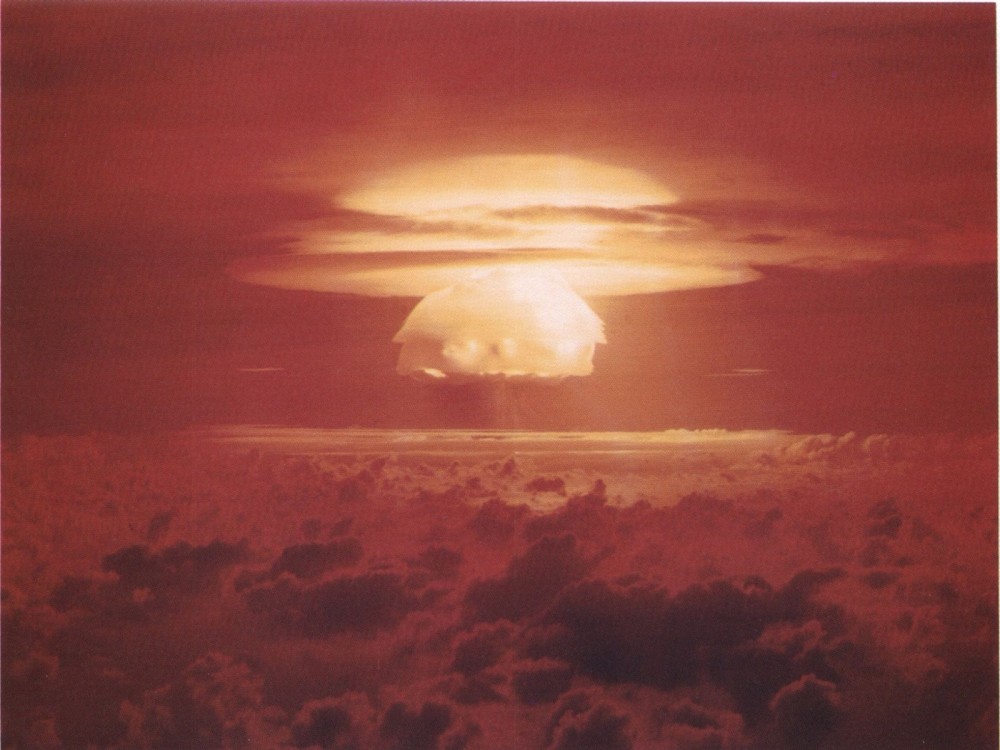
(source: americanyawp.com)
This was the United States’ first test of a dry fuel hydrogen bomb. For a test bomb, it was the most powerful ever used by the United States. The fallout poisoned Pacific islands in the area with irreparable damage.
1948-1949 | The Berlin Blockade
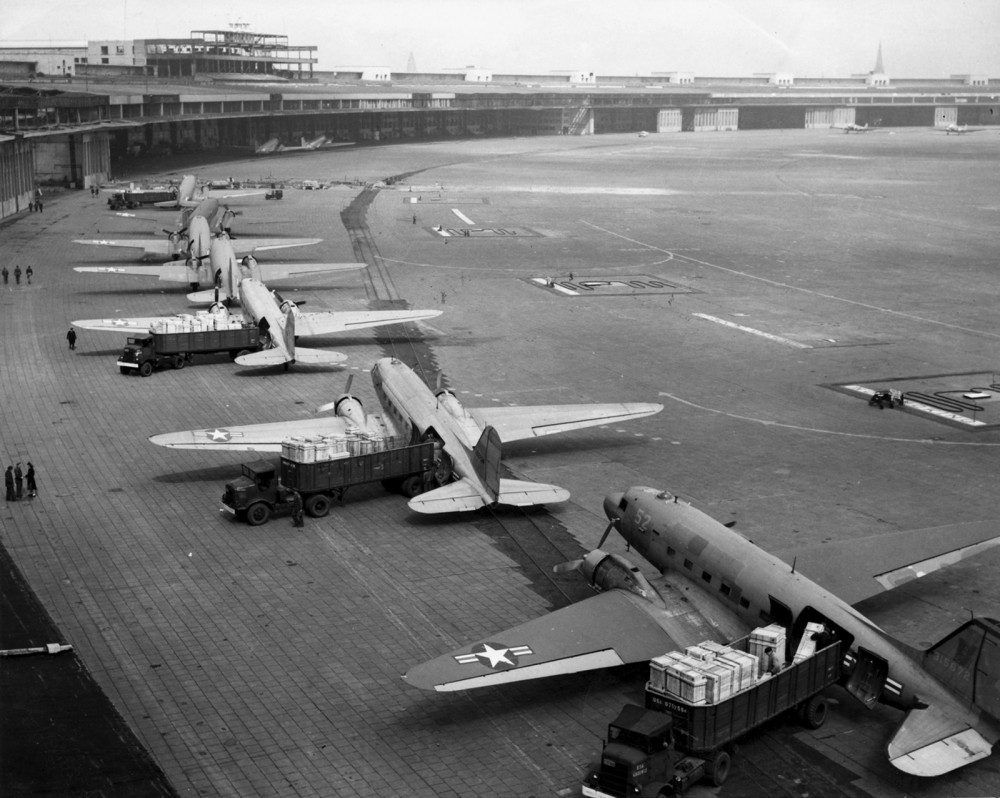
(source: americanyawp.com)
The Berlin Blockade forced allies to shuttle supplies into Berlin via aircraft. As one of the first crises of the Cold War, this action pressured the creation of NATO. Pictured are U.S. Navy and U.S. Air Force aircraft unloading at Tempelhof Airport.
August 1949 | The Creation of NATO

(source: edition.cnn.com)
In response to the Berlin Blockade, President Truman signed the North Atlantic Treaty, creating the organization known as NATO. The countries who signed the treaty agreed that any attack against one of them would be the same as an attack against any of them.
1950 to 1953 | The Korean Conflict

(source: americanyawp.com)
The Korean Conflict took an estimated 1.5-million lives. It was the closest thing the USSR and USA had to a battle-ground. Past the 38th parallel, Stalin’s Russian troops fought alongside the Democratic People’s Republic of Korea (DPRK – North Korea) against The Republic of Korea (ROK – South Korea) and the USA.
April 22, 1954 | The McCarthy Trial
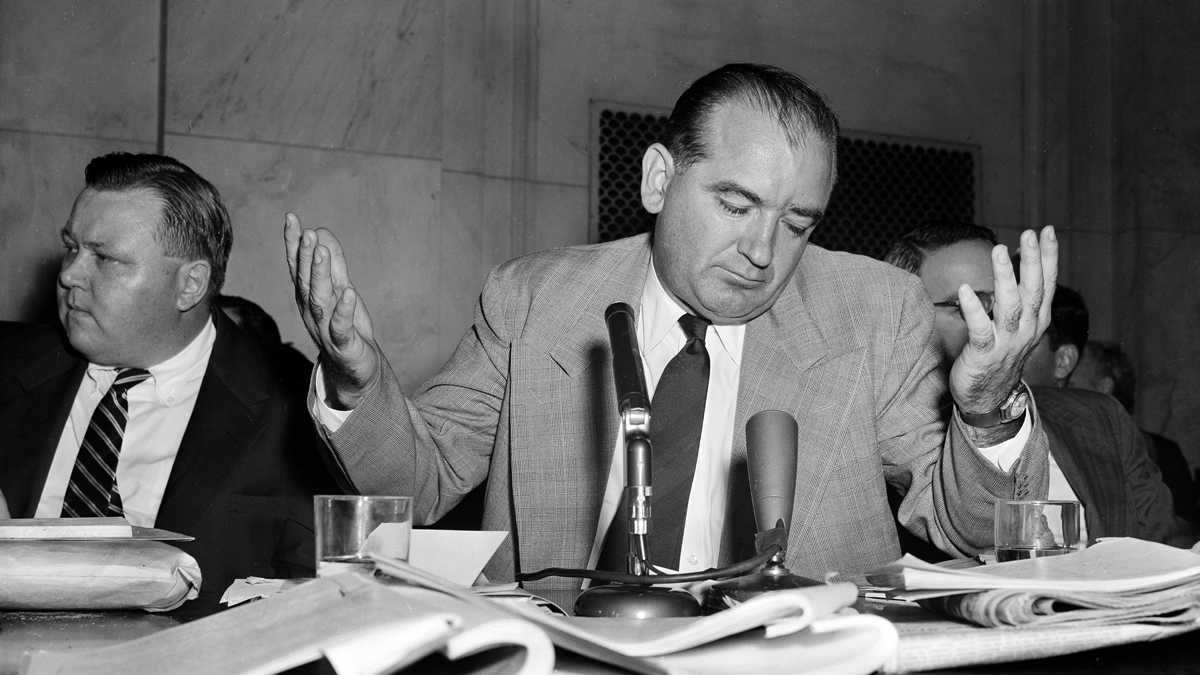
(source: newsworks.org)
Starting with claims during a 1950 speech, McCarthy claimed the State Department harbored “reds.” He then went on a rampage to expose all communists within the government. That was when the anti-communist Senator from Wisconsin accused the US Army of harboring communists. The Army did what they do best; fight back. They brought McCarthy before the Senate for hearing. In this picture, you get a sense of McCarthy’s attitude towards the event.
1954 | Moscow May Day Parade
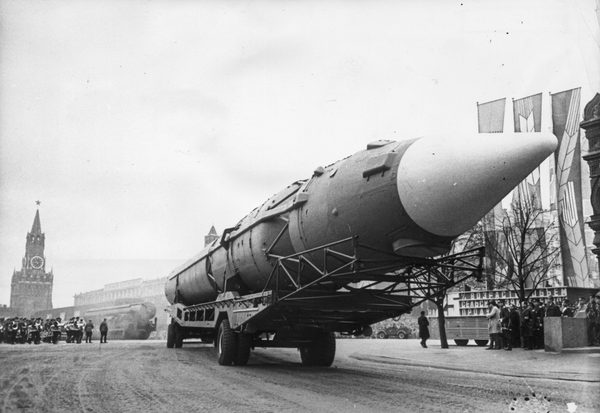
(source: emaze.com)
In direct response to Western Germany joining NATO, Russia and other communist nations would create a similar agreement in 1955, The Warsaw Pact. The above image is a nuke on the streets of Moscow during the May Day celebration.
November 18, 1956 | We Will Bury You Speech

(source: boomeon.com)
To the West, Nikita Khrushchev said, “About the capitalist states, it doesn’t depend on you whether or not we exist. If you don’t like us, don’t accept our invitations, and don’t invite us to come to see you. Whether you like it or not, history is on our side. We will bury you!”
1961 | Construction of the Berlin Wall
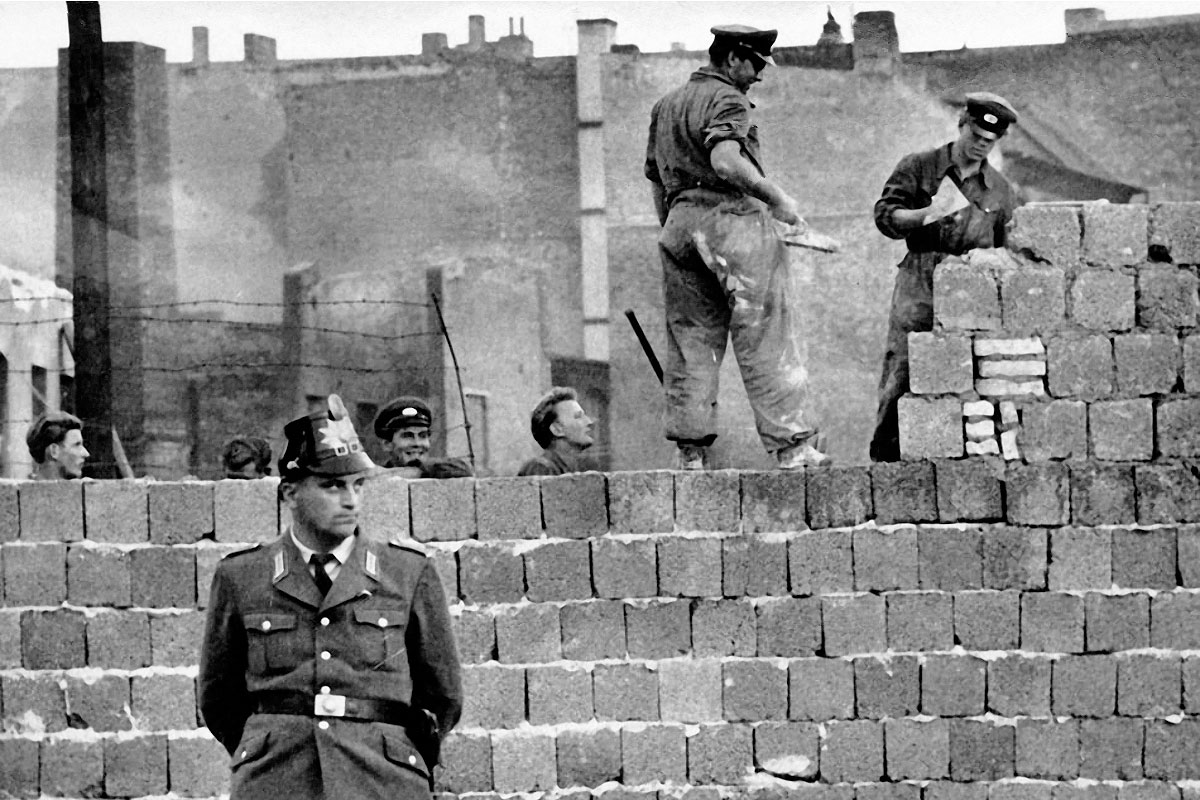
(source: lifegate.com)
The wall built to protect East Germany from the fascists of NATO. It really stood to keep those same Germans from leaving. The wall stood as the symbol of the Cold War for 30 years.
June 1961 | John F Kennedy and Nikita Khrushchev in Vienna
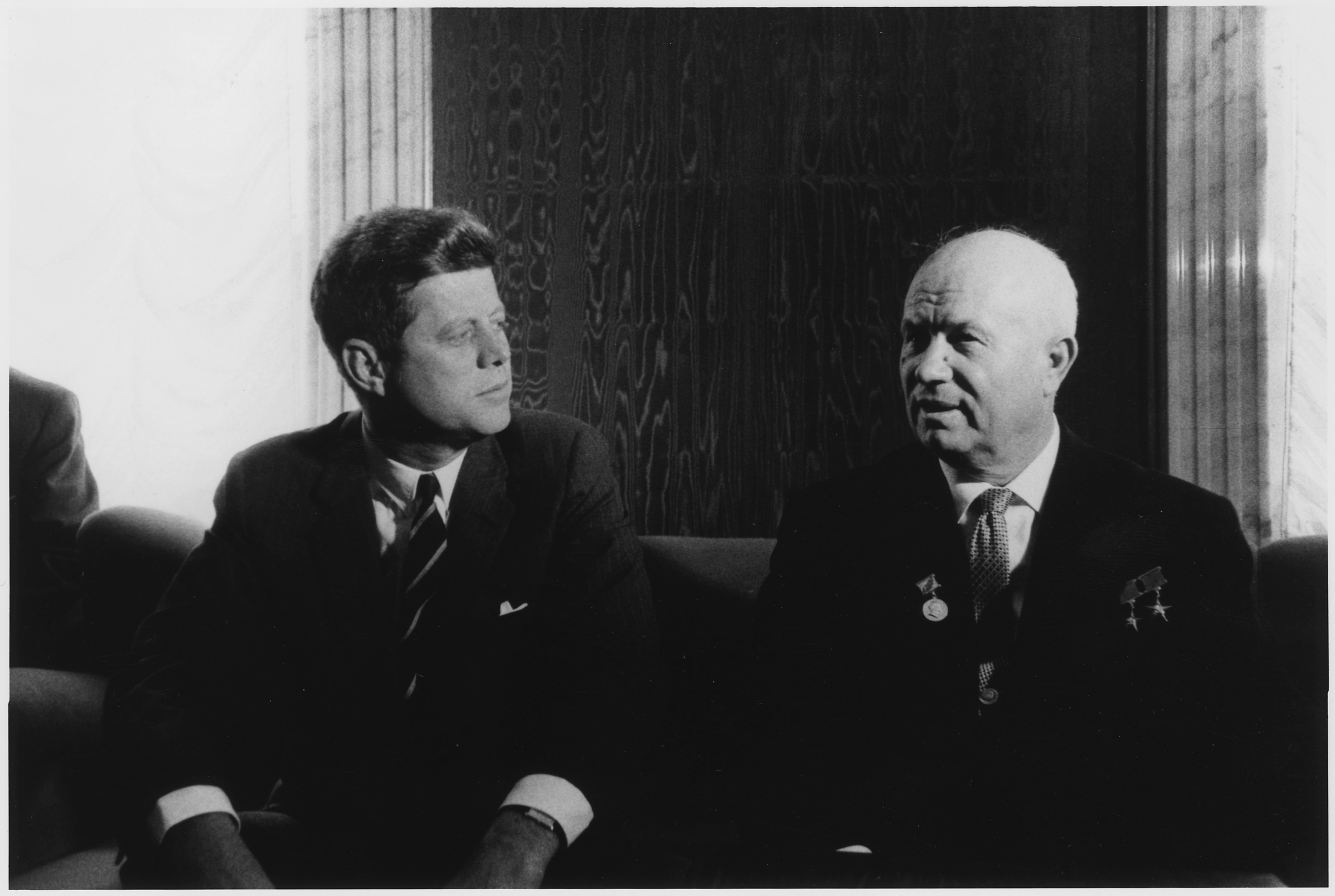
(source: commons.wikimedia.org)
Khruschev and Kennedy attempted to build a bridge despite the wall between them. It was early in JFK’s presidency. His advisers didn’t think it was a good idea, afraid he Khruschev would bully or fool him, but he did it anyway. Much of the conference the two spoke about stabilizing Berlin and Laos.
July 14, 1962 | Small Boy Test

(source: americanyawp.com)
As part of the ongoing development of arms, the United States tested the tactical weapon they called Small Boy in Nevada. This was part of Operation Sunbeam, a rather cheerful name for such a dark weapon.
July 20, 1969 | Apollo 11 Moon landing

(source: youtube.com)
In one corner of the Cold War was the arms race. In the other corner was the race for space. The Soviets beat us into space, but we wouldn’t let them beat us to the moon. In fact, no Soviet ever set foot on the Moon, even though we put 12 people on the lunar surface. Guess we owned that corner.
March 28, 1973 | Last U.S. Troops Leave Vietnam
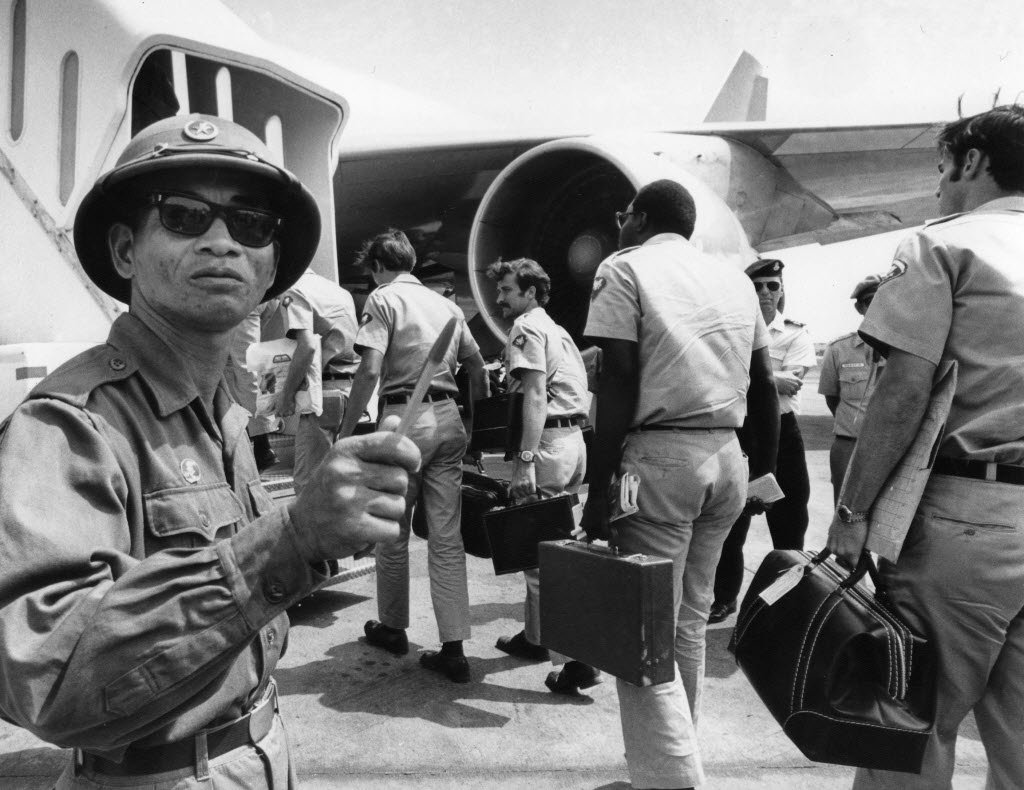
(source: cleveland.com)
The war that never was, the Vietnam Conflict, ended in 1973. In the beginning of his presidency, Nixon didn’t want to go down as the president who lost Vietnam. By 1969, his tune changed. The Paris Peace Accord outlined the terms of a ceasefire, permitting the U.S. troops to exit.
December 8th, 1987 | Intermediate-Range Nuclear Forces Treaty
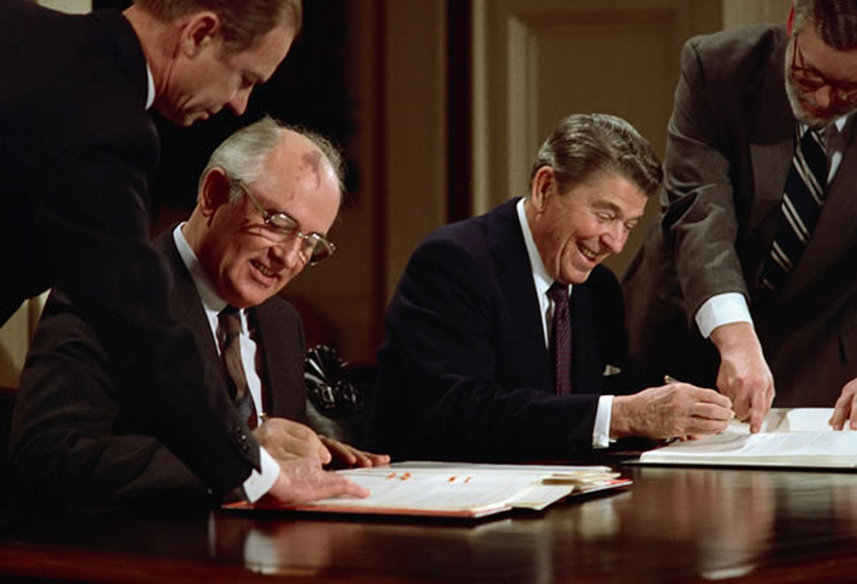
(source: teardownthiswalldbq.weebly.com)
Starting in 1981, the United States the former USSR battled on the negotiation table, attempting to agree about short-range missiles between. With a little help from Margaret Thatcher, the Brittish Prime Minister at the time, they eventually created the INF agreement. In the photo above, Mikhail Gorbachev and Ronald Reagan sign the Intermediate-Range Nuclear Forces
November 1989 | The Fall of the Berlin Wall
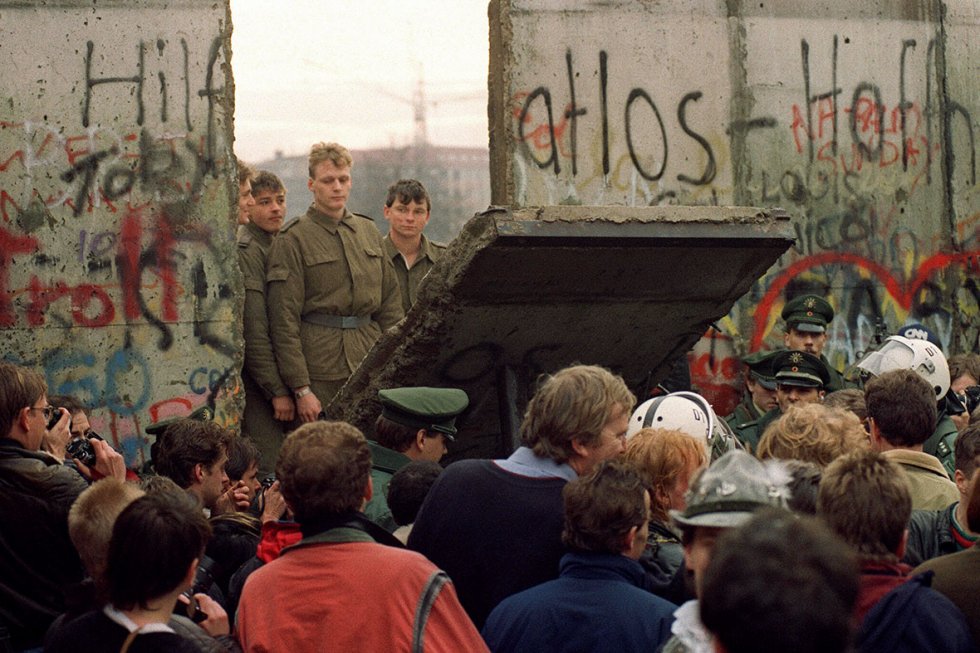
(source: ibtimes.co.uk)
Although there were many miles to go after this, for many, this was the symbolic end of the Cold War. In this famous picture, East German border guards peer through a fallen section of wall nearPotsdamerplatz, at their soon-to-be-reclaimed countrymen.

